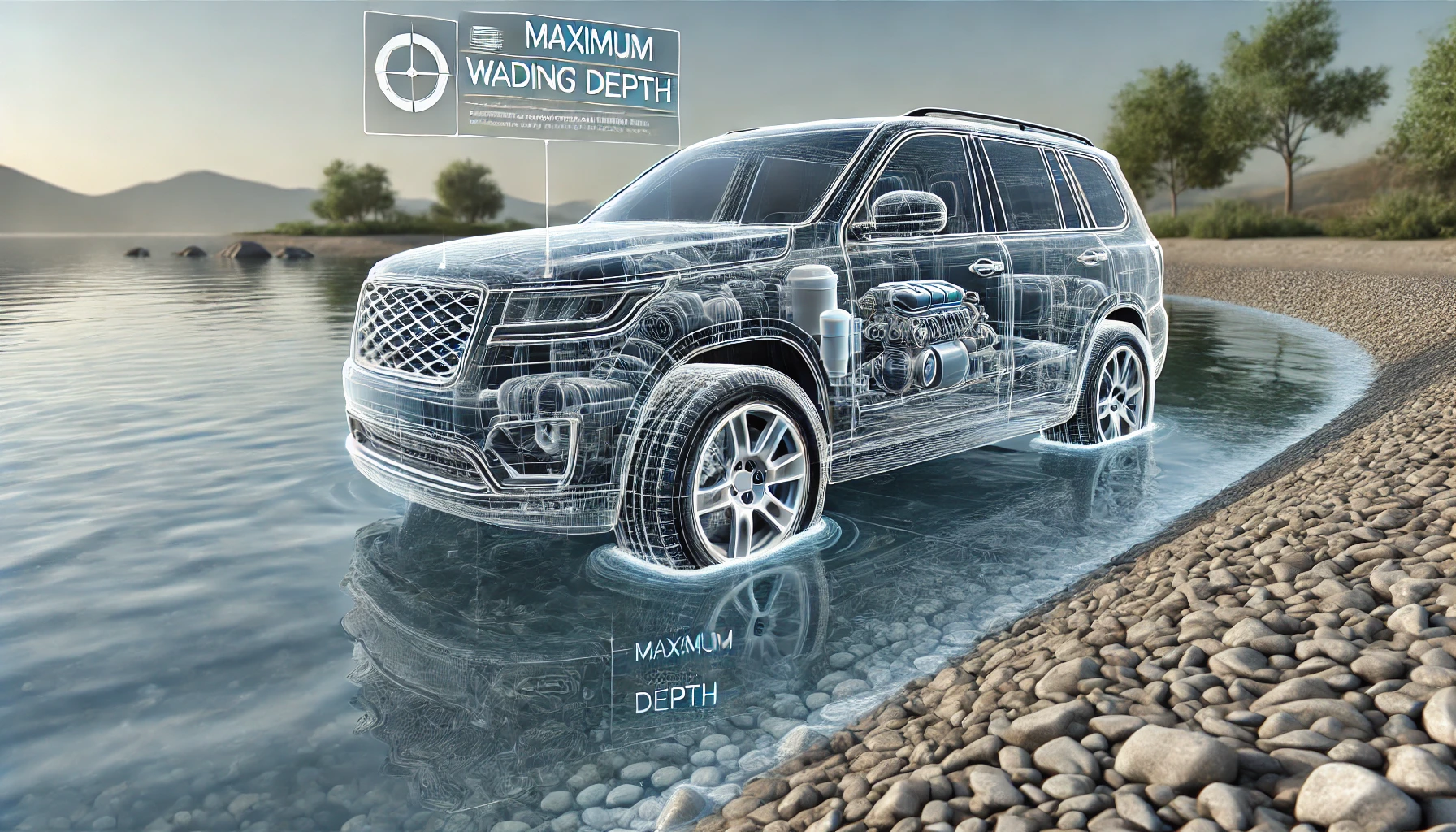What Does Maximum Wading Depth Mean for Your Car?
Обновлено: 2025-12-18 Автор: Sarah
[Car Tech Knowledge/ XNmotors]
The term “maximum wading depth” refers to the maximum depth of water that a vehicle can safely traverse without risking damage to its components or compromising its performance. This specification is crucial for drivers who frequently encounter waterlogged roads, river crossings, or off-road adventures.

Image Source: AI generated
Understanding Maximum Wading Depth
When a car moves through water, several factors come into play that can affect its ability to perform safely. The maximum wading depth indicates how deep the water can be before it reaches sensitive parts of the vehicle, such as the engine, electrical systems, and air intake. Manufacturers test vehicles under controlled conditions to determine this limit, and it varies significantly based on the type of vehicle and its design.
Key Components Affected by Water
1. Air Intake System:
• The air intake is responsible for supplying air to the engine for combustion. If water enters this system, it can lead to hydrolock, a severe condition where water in the cylinders prevents the engine from operating, causing extensive damage.
2. Electronics and Sensors:
• Modern vehicles are equipped with sophisticated electronics and sensors that control everything from engine performance to safety features. Water exposure can cause malfunctions or permanent damage.
3. Exhaust System:
• Although water entering the exhaust is generally not an issue as long as the engine is running, if the water is too deep, it could create backpressure, potentially stalling the engine.
4. Seals and Bearings:
• Prolonged water exposure can lead to corrosion or contamination of wheel bearings and seals, reducing their lifespan.
5. Transmission and Differentials:
• Water can seep into these components if they are not adequately sealed, leading to contamination of fluids and long-term damage.
How Is Maximum Wading Depth Measured?
The maximum wading depth is usually measured from the ground to the highest point of the vehicle’s critical components that are susceptible to water damage. This is often provided in millimeters or inches and is included in the vehicle’s specifications.
• Sedans and Hatchbacks: These vehicles typically have a wading depth of around 200-300mm, as they are not designed for water crossings.
• SUVs and Crossovers: Many SUVs have a wading depth of 400-800mm, depending on their off-road capability.
• Off-Road Vehicles: Purpose-built off-roaders can have a wading depth of 800mm or more, with some models exceeding 1,000mm when equipped with modifications like raised air intakes (snorkels).
Factors Influencing a Vehicle’s Wading Depth
1. Design and Engineering:
• Vehicles with higher ground clearance and specially sealed components naturally have a higher wading depth.
2. Aftermarket Modifications:
• Adding accessories such as snorkels can significantly increase the maximum wading depth by raising the air intake above potential water levels.
3. Driving Conditions:
• The wading depth assumes calm water. Fast-flowing water or waves can push water into areas that are normally protected.
Tips for Safe Water Wading
1. Know Your Vehicle’s Limit:
• Check the owner’s manual or specifications for the official maximum wading depth.
2. Inspect the Terrain:
• Assess the water depth and flow before attempting to cross. Use a stick or other tool if needed.
3. Maintain Steady Speed:
• Drive at a steady pace to create a “bow wave” in front of the vehicle, reducing the risk of water entering critical areas.
4. Avoid Stopping:
• Stopping in water can increase the likelihood of water entering the exhaust or other components.
5. Test Brakes Afterwards:
• Once out of the water, lightly apply the brakes to dry them and ensure they function properly.
Conclusion
Understanding the maximum wading depth of a car is essential for anyone venturing into areas where water crossings are common. By knowing your vehicle’s limits and following proper techniques, you can ensure a safe and damage-free experience. Always consult your vehicle’s manual or manufacturer for accurate wading depth information, and remember: when in doubt, don’t risk it.
( Article / XNmotors Sarah )
Комментарии
https://je-tal-marketing-967.lon1.digitaloceanspaces.com/research/je-marketing-(389).html You may, of course, choose a maxi gown in your special day.
https://je-tal-marketing-935.lon1.digitaloceanspaces.com/research/je-marketing-(144).html You can match elegant strapless robes with gadgets such as a jacket or shawl.
https://je-tal-marketing-955.lon1.digitaloceanspaces.com/research/je-marketing-(353).html You ought to go for some bright colours, or if your daughter has a colour picked out for you then go along with that.
https://je--marketing-834.lon1.digitaloceanspaces.com/research/je-marketing-(285).html Many of the options above would allow you to to cover somewhat bit of a tummy.
https://je-tal-marketing-965.lon1.digitaloceanspaces.com/research/je-marketing-(349).html This also helps go away time for delivery in case the gown takes longer than anticipated to arrive.
https://je-tal-marketing-944.lon1.digitaloceanspaces.com/research/je-marketing-(411).html Beach weddings are extra laid-back and casual than other types of nuptials—and a proper costume would really feel out of place.
https://je-tal-marketing-935.lon1.digitaloceanspaces.com/research/je-marketing-(48).html Jovani provides you the highest highest quality MOB gowns for a low price.
https://je-tal-marketing-964.lon1.digitaloceanspaces.com/research/je-marketing-(487).html This black costume is ideal in case you are on the lookout for one thing extra traditional.
https://je-tal-marketing-942.lon1.digitaloceanspaces.com/research/je-marketing-(401).html Her mom, who similarly sparkled in a gold silk dupioni floor-length skirt suit.
https://je-tal-marketing-970.lon1.digitaloceanspaces.com/research/je-marketing-(442).html Here's a tea-length mother-of-the-bride dress you can simply pull out of your wardrobe time and time once more.